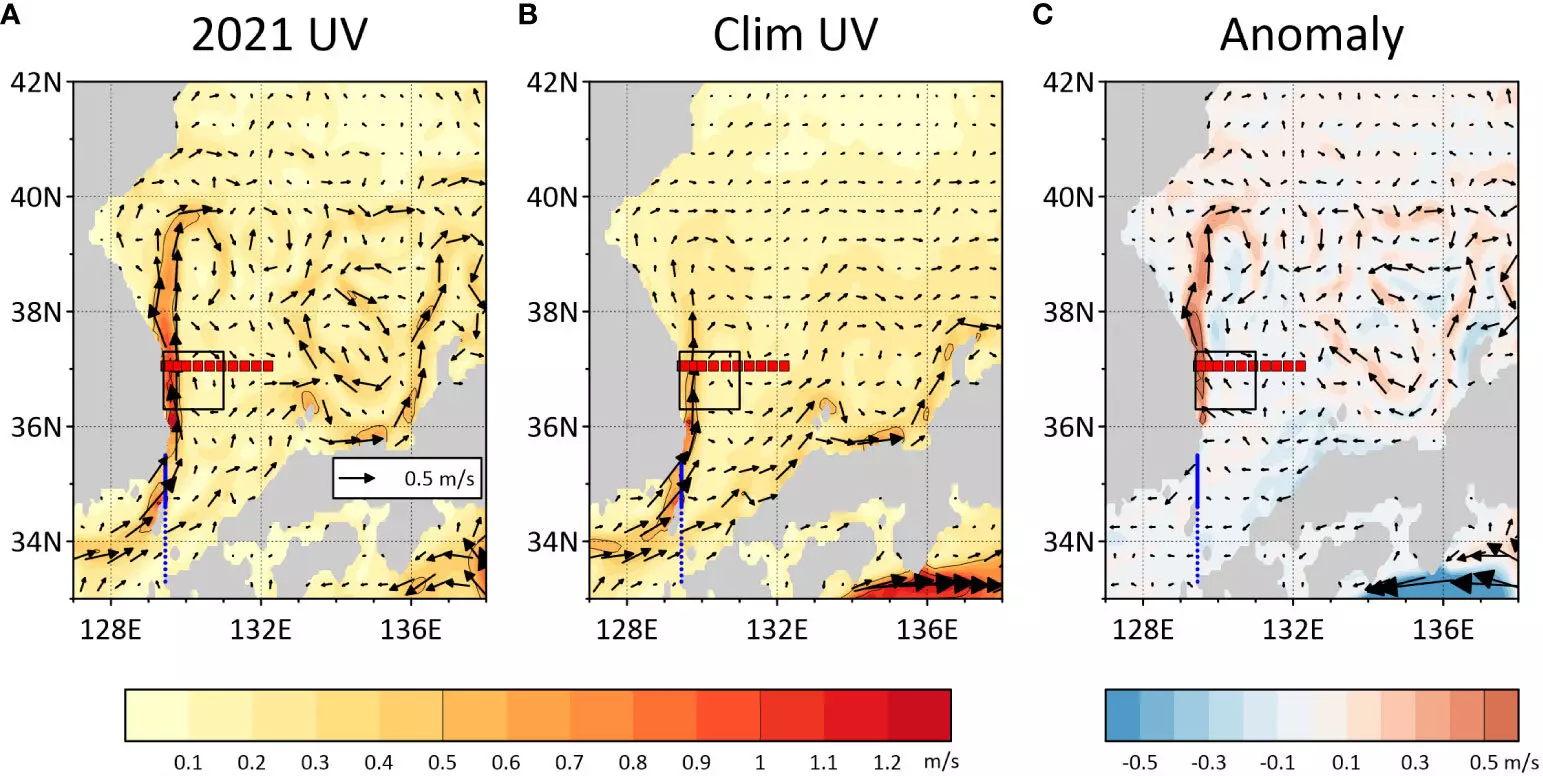Extreme environmental events have assumed greater significance in recent years due to the mounting pressures of climate change. These events, whether occurring on land or in marine ecosystems, pose significant challenges to the health and stability of our planet. While terrestrial heat waves typically span a few days, their counterparts in the oceans can persist for weeks or even months. The summer of 2021 witnessed a remarkable occurrence in the East Sea (Sea of Japan, northwest Pacific). During this period, the East Korea Warm Current (EKWC), a crucial western boundary current off the east coast of South Korea, experienced unprecedented changes in its dominant patterns, first intensifying significantly before gradually weakening.
Exploring the Unusual Event
Recently published research in Frontiers in Marine Science investigated the factors leading to this anomalous marine heat wave. Gyundo Pak, a doctoral researcher from the Korea Institute of Ocean Science and Technology, along with colleagues, discovered that by the end of July 2021, the EKWC shifted northward up to 40°N. Additionally, measurements from seabed moorings indicated a notable increase in current speeds of 1.16m/s during this period, resulting in the transportation of a significantly larger volume of warm water from the tropics to the East Sea. As a key inflow branch to the basin, this intensified transport played a crucial role in the event under scrutiny.
However, as August progressed, a rapid deceleration caused the current to weaken to the usual summer background levels of 0.5m/s. The researchers attribute this sudden oceanographic change to temperature gradients between coastal regions and offshore locations, along with alterations in wind patterns. These changes were linked to coastal downwelling and the freshwater discharge from rivers that began developing in early July 2021. The warm surface waters were pushed to greater depths, hindering the nutrient-rich cold waters from reaching the surface near the coastal regions. Consequently, these areas became zones of low productivity for marine organisms.
Furthermore, wind patterns underwent further modifications due to the influence of the monsoon (Typhoon Lupit) around mid-August. The southerly wind-induced upwelling caused by the typhoon disrupted surface temperatures, contributing to the overall weakening of the EKWC. The research team identifies an anomaly in ocean temperature as the primary driver of the 2021 EKWC marine heat wave. The subsurface layer at depths of 200–300m played a crucial role in this temperature change, largely influenced by the nearby Ulleung Warm Eddy. This lens-shaped water mass, situated within the thermocline (the transition zone between deeper cool water and warmer surface water), was weakened by the passage of Typhoon Lupit.
Implications for the Oceans and Communities
Understanding the occurrence and causes of marine heat waves assumes paramount importance, not only for the preservation of our oceans but also for the communities that rely on them for survival. Global fishing communities, for instance, depend on the oceans as a vital source of protein for a significant portion of the world’s population. Therefore, comprehending the drivers behind such extreme events and their effects on marine ecosystems is crucial for devising effective strategies to mitigate their adverse impacts.
The unprecedented marine heat wave that unfolded in the East Sea during the summer of 2021 drew attention to the continuous challenges posed by climate change. The remarkable changes in the East Korea Warm Current and its subsequent weakening shed light on the complex interplay between temperature gradients, wind patterns, coastal downwelling, and freshwater discharge. Acknowledging the critical role of ocean temperature anomalies and its cascading effects on marine ecosystems enables us to take the necessary steps to safeguard our oceans and the livelihoods of the communities that depend on them.


Leave a Reply